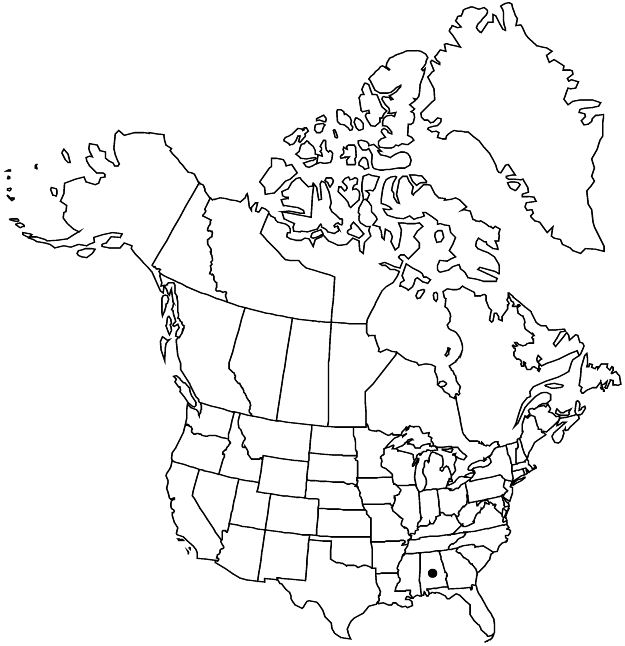Difference between revisions of "Oxalis brasiliensis"
Lebensverh. Oxalis., 43. 1884.
FNA>Volume Importer |
imported>Volume Importer |
||
| (2 intermediate revisions by 2 users not shown) | |||
| Line 28: | Line 28: | ||
|elevation=30–50 m. | |elevation=30–50 m. | ||
|distribution=Ala.;South America (Argentina;Brazil;Uruguay);introduced also in e Asia (Japan);Australia. | |distribution=Ala.;South America (Argentina;Brazil;Uruguay);introduced also in e Asia (Japan);Australia. | ||
| + | |introduced=true | ||
|discussion=<p><i>Oxalis brasiliensis</i> is naturalized in Dallas County (H. E. Horne et al. 2013). The species is recognized by its leaves without oxalate deposits and sepals without tubercles; outer bulb scales with five to eight (to 13) nerves; one or two (or three) flowers per scape; and violet-purple, dark purple-veined corollas. The large, showy flowers make this species popular in the horticultural trade (see http://www.pacificbulbsociety.org/pbswiki/index.php/SouthAmericanOxalis#brasiliensis for additional horticultural information on the species). Growth habit in the Dallas County population ranged from small clumps to dense mats along the roadside, extending to the margin of the woodland.</p><!-- | |discussion=<p><i>Oxalis brasiliensis</i> is naturalized in Dallas County (H. E. Horne et al. 2013). The species is recognized by its leaves without oxalate deposits and sepals without tubercles; outer bulb scales with five to eight (to 13) nerves; one or two (or three) flowers per scape; and violet-purple, dark purple-veined corollas. The large, showy flowers make this species popular in the horticultural trade (see http://www.pacificbulbsociety.org/pbswiki/index.php/SouthAmericanOxalis#brasiliensis for additional horticultural information on the species). Growth habit in the Dallas County population ranged from small clumps to dense mats along the roadside, extending to the margin of the woodland.</p><!-- | ||
--><p>A low percentage of the Dallas County <i>Oxalis brasiliensis</i> population was reproducing by tiny propagules produced at the bract region of the scape. These propagules apparently are highly foreshortened stems, as they produce whorls of small leaves; they do not produce scales and thus are not the so-called aerial bulbils, as in the miniature bulbs described in some South African species (see http://www.pacificbulbsociety.org/pbswiki/index.php/SouthAfricanOxalis).</p> | --><p>A low percentage of the Dallas County <i>Oxalis brasiliensis</i> population was reproducing by tiny propagules produced at the bract region of the scape. These propagules apparently are highly foreshortened stems, as they produce whorls of small leaves; they do not produce scales and thus are not the so-called aerial bulbils, as in the miniature bulbs described in some South African species (see http://www.pacificbulbsociety.org/pbswiki/index.php/SouthAfricanOxalis).</p> | ||
| Line 53: | Line 54: | ||
|publication year=1884 | |publication year=1884 | ||
|special status=Introduced | |special status=Introduced | ||
| − | |source xml=https:// | + | |source xml=https://bitbucket.org/aafc-mbb/fna-data-curation/src/2e0870ddd59836b60bcf96646a41e87ea5a5943a/coarse_grained_fna_xml/V12/V12_807.xml |
|genus=Oxalis | |genus=Oxalis | ||
|species=Oxalis brasiliensis | |species=Oxalis brasiliensis | ||
Latest revision as of 20:17, 5 November 2020
Herbs perennial, acaulous, rhizomes and stolons absent, bulb solitary or clustered, 5–20 × 5–17 mm; outer bulb scales 5–8[–13]-nerved, margins ciliate, inner scales thick, orangish. Leaves basal; petiole often purplish proximally, 3–13[–20] cm, glabrous [sparsely and finely strigose]; leaflets 3, light green, obdeltate with rounded angles, [2–]10–21[–32] mm, lobed 1/10–1/20 length, lobes apically shallowly convex to nearly truncate, margins glabrous or sparsely irregularly ciliate, hairs loose, fine, abaxial surface sparsely but evenly strigose, adaxial surface glabrous, oxalate deposits absent. Inflorescences umbelliform cymes, 1(–2)[–5]-flowered; scapes 14–17[–30] cm, glabrous. Flowers apparently tristylous (mid-styled flowers observed); sepals purplish, apices without tubercles, surfaces glabrous; petals violet-purple, with dark purple veins proximally, 18–20 mm. Capsules narrowly cylindric, 15–22 mm, indumentum not seen.
Phenology: Flowering Mar–Jul.
Habitat: Disturbed roadsides.
Elevation: 30–50 m.
Distribution

Introduced; Ala., South America (Argentina, Brazil, Uruguay), introduced also in e Asia (Japan), Australia.
Discussion
Oxalis brasiliensis is naturalized in Dallas County (H. E. Horne et al. 2013). The species is recognized by its leaves without oxalate deposits and sepals without tubercles; outer bulb scales with five to eight (to 13) nerves; one or two (or three) flowers per scape; and violet-purple, dark purple-veined corollas. The large, showy flowers make this species popular in the horticultural trade (see http://www.pacificbulbsociety.org/pbswiki/index.php/SouthAmericanOxalis#brasiliensis for additional horticultural information on the species). Growth habit in the Dallas County population ranged from small clumps to dense mats along the roadside, extending to the margin of the woodland.
A low percentage of the Dallas County Oxalis brasiliensis population was reproducing by tiny propagules produced at the bract region of the scape. These propagules apparently are highly foreshortened stems, as they produce whorls of small leaves; they do not produce scales and thus are not the so-called aerial bulbils, as in the miniature bulbs described in some South African species (see http://www.pacificbulbsociety.org/pbswiki/index.php/SouthAfricanOxalis).
Selected References
None.